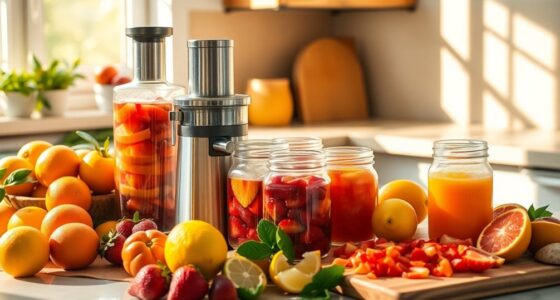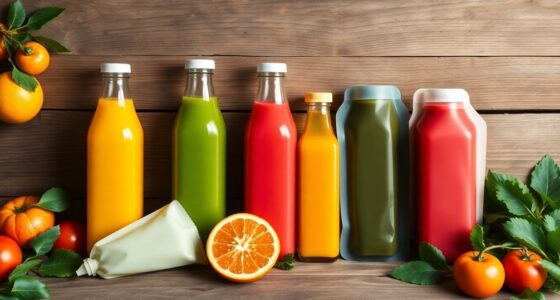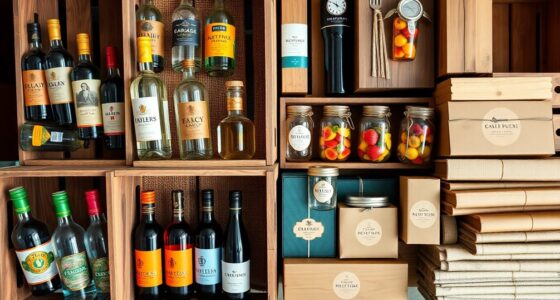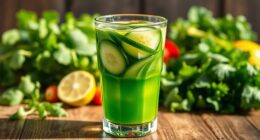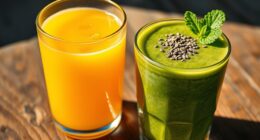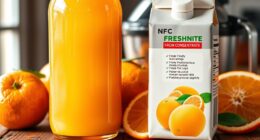Packaging affects the shelf life of beverages by acting as a barrier against light, oxygen, and moisture. These elements can spoil your drink, leading to loss of flavor and safety. Strong seals keep out contaminants and help maintain freshness, while advanced materials can even enhance preservation. Plus, proper temperature control during transport is essential. Want to uncover more about how these factors work together to keep your beverages fresh?
Key Takeaways
- Packaging materials protect beverages from light, oxygen, and moisture, all of which can lead to spoilage and degradation of flavor.
- Strong seals in packaging prevent microbial growth and contamination, extending the beverage's shelf life significantly.
- Active packaging technologies, such as oxygen scavengers, actively reduce the factors that cause spoilage, thereby enhancing freshness.
- Temperature control during transport, facilitated by proper packaging, helps maintain the quality and safety of beverages until they reach consumers.
- Sustainable packaging can minimize environmental impact while still preserving beverage integrity and extending shelf life through effective barrier properties.
Understanding Beverage Shelf Life: Definition and Importance
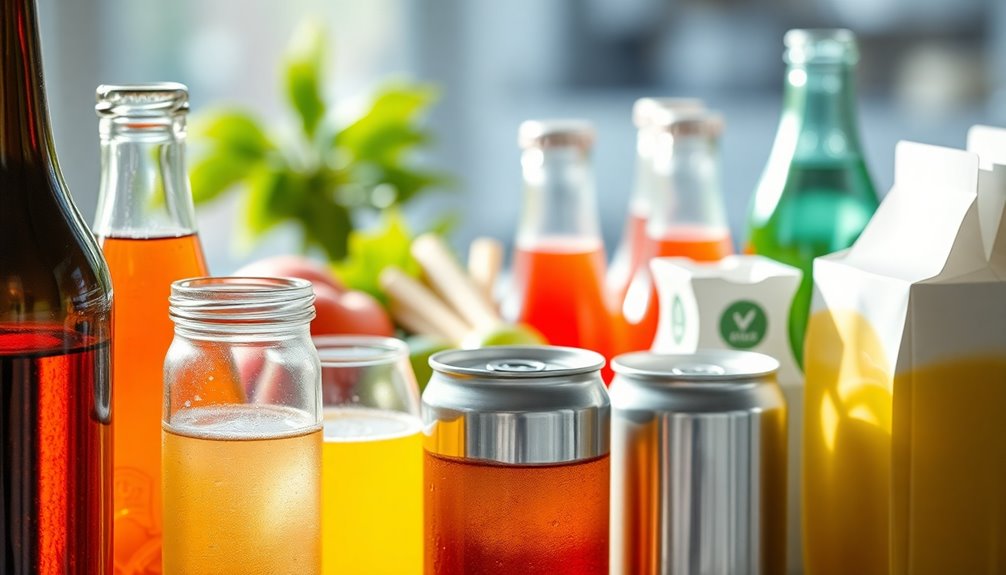
Beverage shelf life is vital for guaranteeing that the drinks you enjoy remain safe and flavorful. It defines how long a beverage stays safe and maintains its desired characteristics, starting from production.
The primary shelf life covers the time from manufacture until the drink becomes unacceptable, while the secondary shelf life refers to the period after opening. Understanding this concept is essential for you to secure food safety and minimize waste.
Various factors influence shelf life, including the initial quality of ingredients and the packaging materials used. Proper storage conditions can also affect nutritional value and product quality. Additionally, many beverages, like frozen yogurt, can benefit from innovative packaging solutions that extend their freshness and appeal.
Key Factors Impacting Beverage Shelf Life

When it comes to ensuring the quality and safety of your drinks, several key factors play an essential role in determining their shelf life. Beverage manufacturers must consider the initial quality of ingredients, as microbial load can affect taste and safety. Proper packaging solutions also matter; interactions between materials and beverages can lead to spoilage. Additionally, storage temperatures and humidity levels during transportation are critical; extreme conditions accelerate spoilage. Formulations with preservatives and antioxidants considerably extend the shelf life by inhibiting microbial growth. Advanced processing methods can eliminate harmful microorganisms, further enhancing safety and quality. Moreover, beverages that contain nutrients for skin health may require specific packaging to maintain their beneficial properties over time.
| Factor | Impact on Shelf Life | Solutions |
|---|---|---|
| Initial Ingredient Quality | Affects taste & safety | Source high-quality ingredients |
| Packaging Materials | Alters composition | Use appropriate packaging |
| Temperature Control | Prevents spoilage | Maintain ideal storage temps |
Effective Testing Methods for Beverage Shelf Life
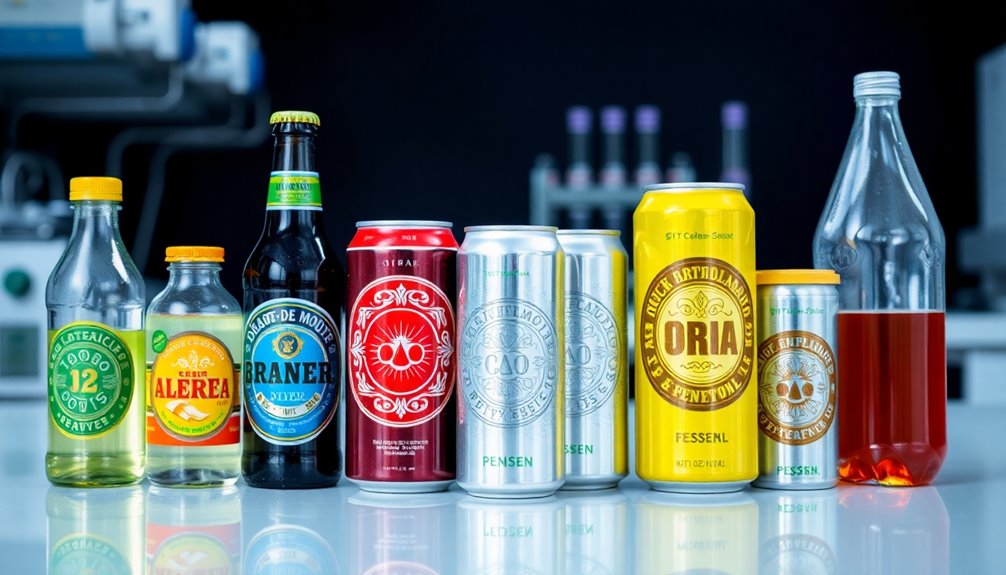
To guarantee your drinks remain safe and enjoyable throughout their shelf life, effective testing methods are essential.
Real-time experiments help you monitor quality under expected storage conditions, ensuring your beverage products stay palatable.
Challenge tests simulate microbial growth by introducing pathogens, allowing you to evaluate contamination risks over time.
Predictive microbiology uses mathematical models to forecast microbial behavior, helping you make proactive adjustments to formulations and packaging.
Accelerated shelf-life testing simulates aging, offering insights into how long your beverages will maintain quality without waiting for natural degradation.
Finally, sensory evaluation assesses changes in taste, aroma, and appearance, providing critical feedback on quality and safety to guide product improvements.
Steps to Conduct a Comprehensive Beverage Shelf-Life Study
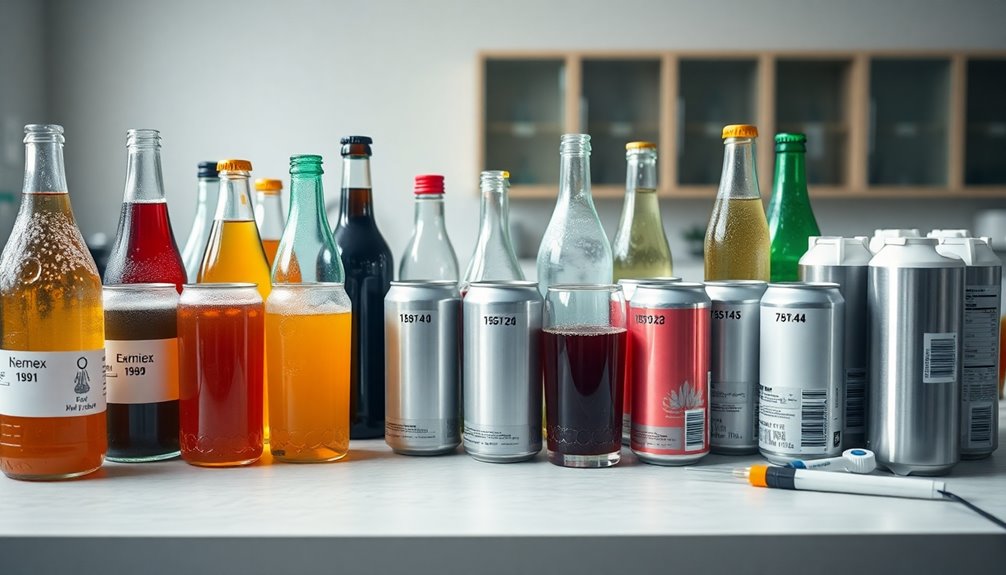
A thorough beverage shelf-life study involves several key steps to confirm that your product remains safe and enjoyable for consumers. Start by reviewing your product's formula and storage conditions. Define your quality and safety testing parameters, including any legal claims. Next, select appropriate testing methods such as microbiological, chemical, and sensory evaluations.
Here's a quick overview of the steps:
| Step | Description | Importance |
|---|---|---|
| Review Formula | Assess ingredients and storage needs | Influences shelf life |
| Define Testing Parameters | Set quality and safety benchmarks | Guarantees compliance and reliability |
| Select Testing Methods | Choose methods for evaluation | Extensive assessment |
| Analyze Results | Interpret data and monitor post-market | Guarantees ongoing product integrity |
Following these steps helps you navigate the complexities of the beverage industry while minimizing environmental impact.
Strategies to Extend Beverage Shelf Life
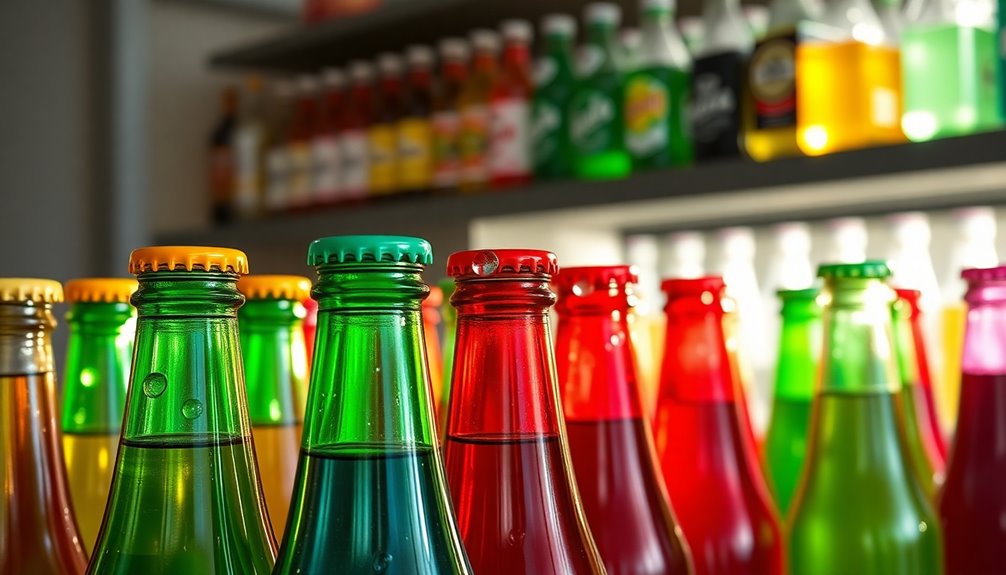
Extending the shelf life of beverages requires a combination of innovative strategies and careful planning. To achieve this, you can employ next-generation additives like natural preservatives that inhibit microbial growth without sacrificing flavor.
Using antioxidants, such as Kancor's OxiKan CL derived from rosemary, helps maintain product quality by preventing oxidation. Additionally, modified atmosphere packaging (MAP) controls oxygen and moisture levels, which can greatly extend its shelf life.
Effective packaging materials, like aluminum layers or light-blocking colored glass, protect your beverage from environmental degradation. Conducting regular shelf-life studies guarantees you identify the best methods to maintain consistent quality.
Finally, adopting sustainable practices can help reduce your carbon footprint while enhancing the longevity of your beverages.
The Role of Packaging in Preserving Beverage Freshness
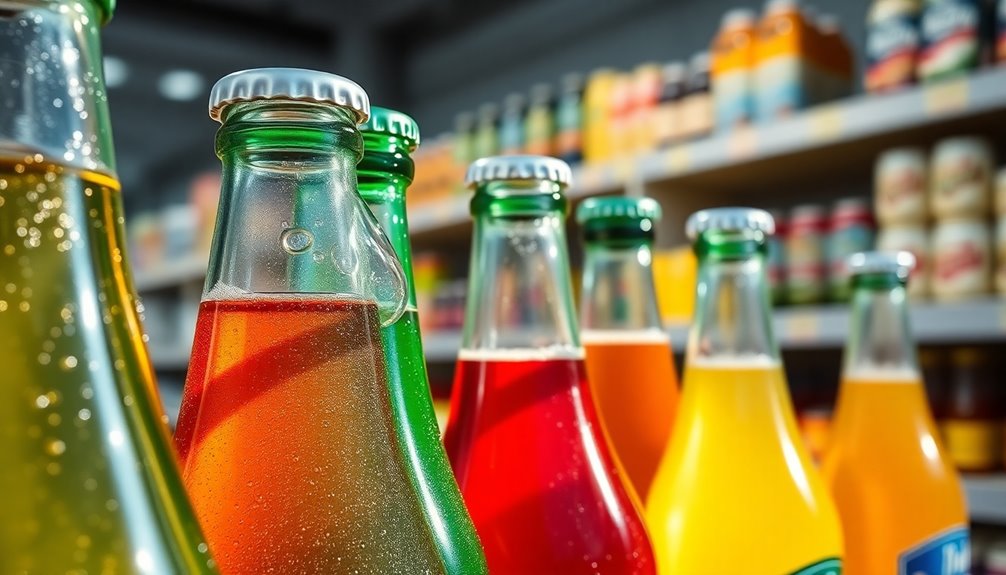
While many factors contribute to the freshness of beverages, packaging plays a pivotal role in preserving their quality. Effective packaging materials like aluminum or colored glass provide light protection and shield against oxygen, preventing spoilage. Strong packaging seals are essential; they keep out moisture and inhibit microbial growth. Incorporating active technologies, such as oxygen scavengers and moisture absorbers, further enhances freshness by slowing degradation. Plus, proper temperature control during transport guarantees beverages stay fresh longer. Furthermore, emerging trends in beverage packaging are increasingly focused on sustainability, with brands exploring eco-friendly materials that reduce environmental impact while still ensuring product integrity. Innovative designs, such as biodegradable packaging and reusable containers, are gaining traction, appealing to environmentally conscious consumers. As manufacturers adopt these trends, they not only enhance the longevity of their products but also align with a growing demand for responsible packaging solutions.
| Packaging Feature | Benefit |
|---|---|
| Packaging Materials | Light and oxygen protection |
| Oxygen Scavengers | Prevents oxidation |
| Temperature Control | Maintains freshness |
Frequently Asked Questions
How to Increase the Shelf Life of a Beverage?
To increase the shelf life of your beverage, focus on using natural preservatives and antioxidants to prevent spoilage.
Consider implementing modified atmosphere packaging to reduce oxidation and microbial growth.
Make sure your packaging has proper seal integrity and is moisture-resistant to maintain quality.
Regularly conducting shelf-life studies can help you adjust your formulations and packaging strategies, ensuring that your beverage stays fresh and appealing for a longer period.
What Is the Term for Packaging Used to Improve the Shelf Life of the Product?
The term you're looking for is "active packaging."
This innovative approach uses materials that actively interact with the contents to enhance product longevity. It absorbs or releases certain substances to maintain freshness, preventing spoilage.
Techniques like oxygen scavengers and moisture absorbers play a key role in this process. By choosing active packaging, you're not just extending shelf life; you're also contributing to reducing waste and improving sustainability in the market.
What Beverage Has the Longest Shelf Life?
When it comes to beverages, honey takes the crown for the longest shelf life. You can store it indefinitely due to its low moisture content and natural preservatives.
If you're looking for something else, distilled spirits like whiskey or vodka can also last for years, especially when unopened.
Just remember to keep them in a cool, dark place to maintain their quality.
Enjoy your long-lasting beverages without worrying about expiration!
What Are the Three Factors That Influence the Shelf Life of Packaged Food?
When considering the shelf life of packaged food, three key factors come into play.
First, the integrity of the seal is essential, as it keeps out harmful microorganisms and moisture.
Next, the choice of packaging materials can greatly impact how well the food is protected from external elements.
Finally, storage conditions, including temperature and humidity, also play a critical role in determining how long your food stays fresh and safe to consume.
Conclusion
So, next time you sip that fizzy drink, remember: it's not just your taste buds at play; it's a drama of packaging, science, and the relentless march of time. Who knew that a simple can or bottle could be the unsung hero—or villain—of your beverage's lifespan? If only your fridge could inspire the same commitment to freshness! After all, in the world of shelf life, every second counts, and every sip tells a story. Cheers to that!
Cindy thoroughly researches juicing trends, techniques, and recipes to provide readers with practical advice and inspiration. Her writing style is accessible, engaging, and designed to make complex concepts easy to understand. Cindy’s dedication to promoting the advantages of juicing shines through her work, empowering readers to make positive changes in their lives through the simple act of juicing.




